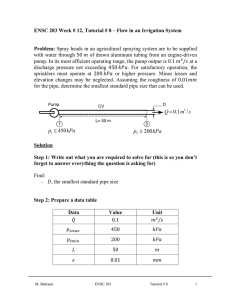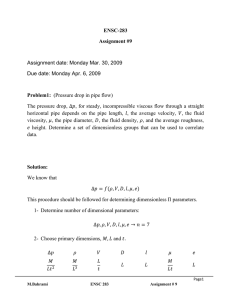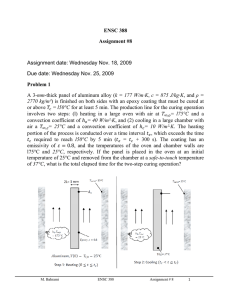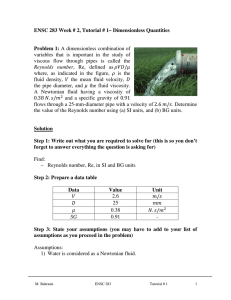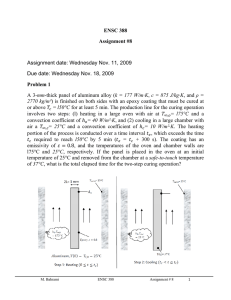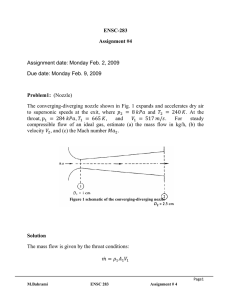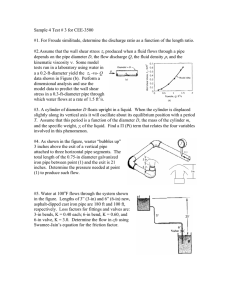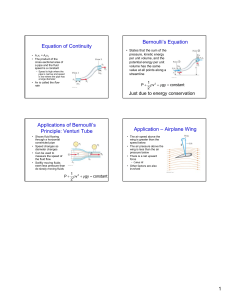ENSC-283 Assignment #8 Problem1:
advertisement
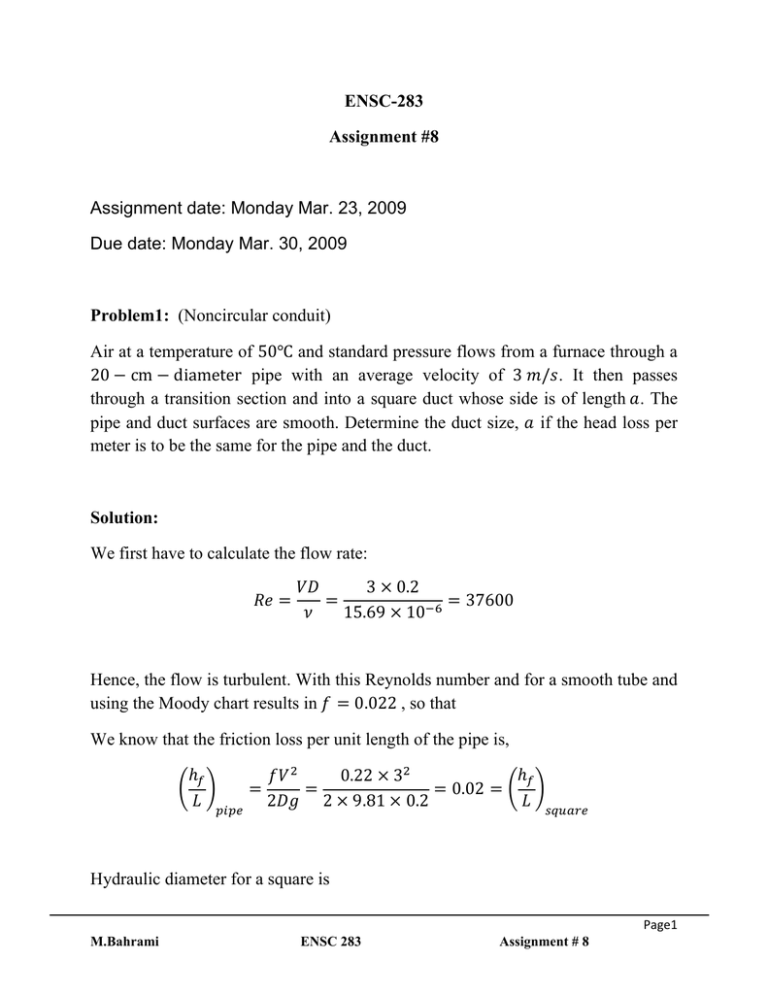
ENSC-283 Assignment #8 Assignment date: Monday Mar. 23, 2009 Due date: Monday Mar. 30, 2009 Problem1: (Noncircular conduit) Air at a temperature of 50 and standard pressure flows from a furnace through a 20 cm diameter pipe with an average velocity of 3 / . It then passes through a transition section and into a square duct whose side is of length . The pipe and duct surfaces are smooth. Determine the duct size, if the head loss per meter is to be the same for the pipe and the duct. Solution: We first have to calculate the flow rate: 3 0.2 15.69 10 37600 Hence, the flow is turbulent. With this Reynolds number and for a smooth tube and using the Moody chart results in 0.022 , so that We know that the friction loss per unit length of the pipe is, 2 0.22 3 2 9.81 0.2 0.02 Hydraulic diameter for a square is Page1 M.Bahrami ENSC 283 Assignment # 8 4 4 4 and (1) 2 Average velocity in the square, , can be obtained from the following relationship 0.2 3 4.53 10 4 0.094 Substituting in Eq. (1) yields 0.02 / 0.468 (2) Similarly, the Reynolds number based on the hydraulic diameter is 0.094 15.69 5994 10 (3) . Two find these unknowns three We have three unknowns, , and equations are needed. We already have Eqs. (2) and (3). For the other equation, Moody chart or Colebrook equation can be used. Using the Colebrook equation and letting 0 yields 1 2log 2.51 (4) Solving Eqs. (2) to (4) simultaneously, Page2 M.Bahrami ENSC 283 Assignment # 8 0.024; 27000; 0.222 Problem 2: (Flow from a water tower: flow rate unknown) A fire protection system is supplied from a water tower and standpipe 24 tall. The longest pipe in the system is 180 and is made of cast iron about 20 years old. The pipe contains one gate valve; other minor losses maybe neglected. The pipe diameter is 10 . Determine the maximum rate of flow ( / ) through this pipe. 1 h=24 m D = 10 cm gate valve z Q 2 h=180 m Solution: Writing energy equation between points 1 and 2 gives 2 , 2 (1) where , , ; 2 ; , 2 (2) Assuming that Page3 M.Bahrami ENSC 283 Assignment # 8 0; 1 Then Eq.(1) can be written as 2 For fully open valve, gives / 2 (3) 8. Substituting in Eq. (3) and after simplification 2 8 (4) 1 To be conservative, assume the standpipe is the same diameter as the horizontal pipe. Then 180 24 0.1 2040 To find in Eq. (2), we first assume that the flow is fully turbulent. The roughness ratio, / 0.005 ( 0.00085 for cast iron and doubled to allow for the fact that the pipe is old), Hence from the Colebrook equation 1 2log 0.005 3.7 2.51 where 0.1 10 10 From Eq. (4), 2 9.81 24 2040 8 1 21.7 2048 1 Hence the Reynolds number can be obtained from the following relationship Page4 M.Bahrami ENSC 283 Assignment # 8 21.7 10 2048 1 Substituting in the Colebrook equation and solving for yields 0.0307 and 2.71 / and 4 0.0213 Page5 M.Bahrami ENSC 283 Assignment # 8
